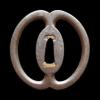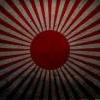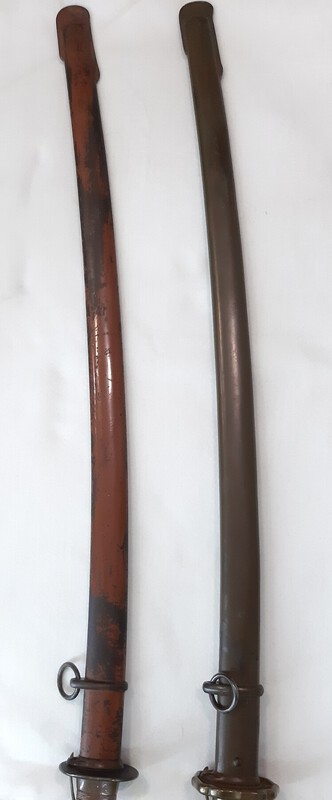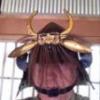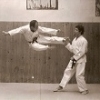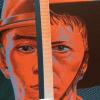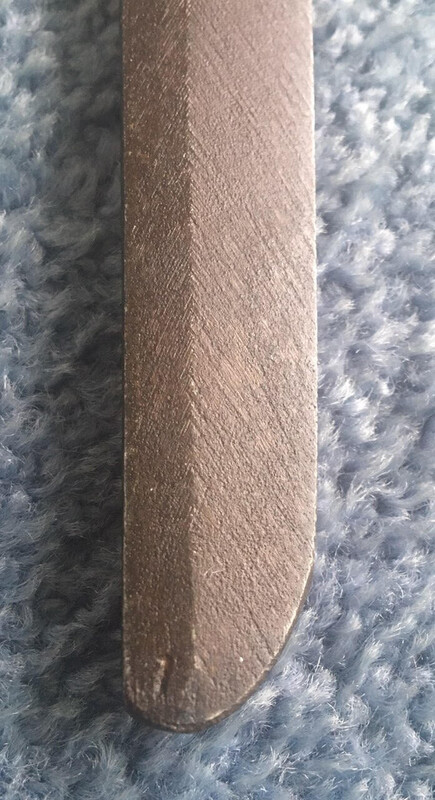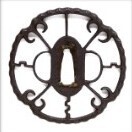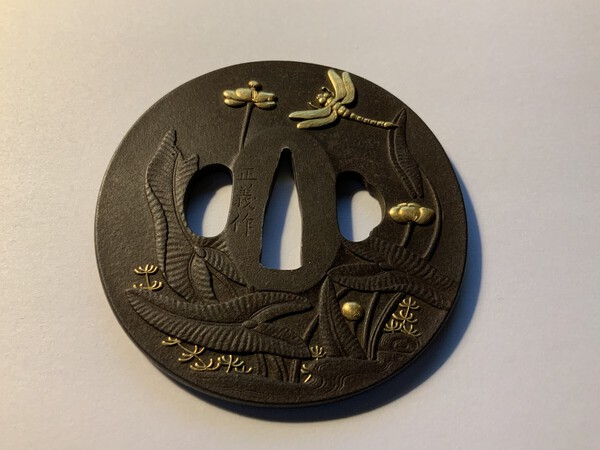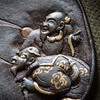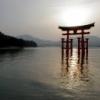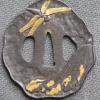Leaderboard
Popular Content
Showing content with the highest reputation on 03/21/2021 in Posts
-
4 points
-
Good find from Junk dealer, seems to be late Edo period tanto. Signature is - 近江国胤勝 - Ōmi no kuni Tanekatsu. This smith Tanekatsu was rather unknown but he studied under the famous Taikei Naotane. Age would be in the mid-later 1800's.3 points
-
文化十三年二月 應渡邊好禮需造之 - Responding to the order from Watanabe Yoshinori (reading?), made this.3 points
-
That Abe Nobuyuki did not have the title of Count. I found that Marquis Asano Nagakoto's younger brother was adapted into Abe family and became Count Abe Masatake. Ref. 阿部正桓 - Wikipedia3 points
-
3 points
-
2 points
-
Ha! I just had a thought - what if the nut is upside down? There is only one way to know..........2 points
-
Hello everyone, Just wanted to share a preview of a tsuba that I am photographing and writing about for my personal collection website: Tsuba Otaku | Reflections of a Not So Empty Mind. This tsuba is part of personal collection and not for sale therefore the propose of the is new topic is to just promote the education and learning of our shared hobby of collecting Japanese sword fittings. This is a Katchūshi (armorsmiths) tsuba from the collection of my late Japanese sword teacher Kunio Izuka of the New York Tōken Kai. It was purchased via auction from Bonham Auction House New York in Nov. 2020. More information about Kunio-sensei can be found here. I think it dates from the late Muromachi Period comparing it to similar tsuba I have had. I have found this tsuba published in a Japanese book about tsuba that I purchased from Grey Doffin years ago at the Tampa Japanese Sword and antiques show. My wife Tamaki is helping me with the translation of the few pages of this book regarding this tsuba and more information about the book itself. I will share more details on April 1st when I update my personal collection website. I find it interesting that the raised rim of the tsuba a separate piece of iron, feels hollow, and that plate of the tsuba retains much of the original black lacquer applied to the surface. This is more visible in the second photograph. This a small tsuba relatively speaking and likely made for a wakizashi and measures 7.4 cm wide by 7.6 cm high. Feel free to politely discuss and ask questions. Thank you for reading.2 points
-
https://studyingjapaneseswords.com/2018/03/17/20-nanboku-cho-tanto/ The photo in "Chapter 19 Nanboku-cho Period Tanto" was changed. Please click the link above to go to the chapter directly. I finished editing and correcting the draft and working to publish the book but I am having difficulty deciding which publisher suits me and how to go about. Vast information to go through. Creating a physical book is harder than writing. Yurie2 points
-
Too many questions to answer in one post, Peter, but all valid in their own right. An incredibly complex area that would be a fascinating read, if such a thing existed. Starting with a generality. It is my experience that conversions in Japan today are worth less than the matchlock upon which they were built. Some very beautiful and complicated conversions are rare and fascinating however, and may well be worth more. (Boso-Raika sliding pill-lock mechanism for example.) Of course it depends on the dealer and the customer/collector. Many collectors simply want an example of 'a Hinawa-Ju' matchlock, preferably with a Mon and/or some flashy Kirigane copper and brass decorations that they can polish and display somehow. Although a conversion will have added speed of loading and maybe extra firepower to a weapon, the gun will in the process have increased its killing power and lost some of its 'innocence', created as it was in a Golden Age (c1615-c1850) when war was not pressing urgently upon the shores of Japan, and gunnery had become a civilized Martial Art. It was clear that smoothbore muzzle-loading Hinawa-ju could no longer cut the mustard against breech-loading Western percussion, rim/pin-fire and cartridge rifles though. Without a strong central government, individual Han opened their coffers and employed agents to negotiate separately with traders or representatives of the various foreign powers to procure modernized weapons. This means that few records were kept as this was a largely secret trade. To match the sudden appearance of Western weapons from here and there, native gunsmiths had to learn how to adapt old weapons, or create new ones in parallel. Some Han (e.g. Kaga) issued orders and gathered up all available old matchlocks and either melted them down or converted them. Smiths that could not adapt continued to produce old style matchlocks which probably failed to sell. Some smiths learned how to make conversions of these; others how to imitate and create faithful copies of Western weapons. I do not think there is a market for converted weapons to be re-introduced into Japan, unless in very specific circumstances. Importing any kind of gun into Japan is a long drawn-out and tiring business, the whole system designed to wear down and discourage everyone involved. There is a consciousness among the trade of how a gun has been registered. If the card says 'percussion' system on it, for example, there is less incentive to change it back into a matchlock as that would be breaking the law. No alterations are legally allowed on registered weapons. (Taking a break here...)2 points
-
2 points
-
I see now that I poorly worded my post above. What I meant, was that issued items were painted black. Sorry for any confusion I may have caused you and yours.2 points
-
2 points
-
False. The carbon is what is making the steel. The higher the carbon the more flexible and durable the steel. Simple basic science. @DoTanuki yokai And your knowledge is non-existent. Go bend your nihonto katana and cry im done. You linked me a video of nihonto smiths destroying katanas as proof they will stand up to modern steel. I linked you a video of a famous American smith explaining why youre naive and anothed video of high carbon steels being stress tested the same way as your nihonto and passing. At this point youre being willfully ignorant.2 points
-
All swords need to be tempered. Plus aesthetics. That choji hamon cost me an extra 100 bucks. Suguha would have been cheaper. I could have spent more for a more flamboyant one but I didn’t want to break the bank. The L6 is actually very difficult to work with and any fancier hamon he would have had to make the blade several times to get it right. It would have cost me 1700. He politely asked me not to make him do it as well when we were hammering out the details of the blade. When your buying from a Japanese smith your paying a huge amount for the Japanese laws regarding sword making. They can make three a month I thought it was less. They also have to do an unpaid apprenticeship. They also cannot use any modern methods or metals. Your paying for this extra hard work that is unnecessary with modern metals and equipment. About this video they are destroying nihonto katanas there my friend. Go look up someone doing this to modern 1060 or higher. I am speaking from personal experience. I have destroyed a modern nihonto in a stress test versus this katana. Thats right i said it i destroyed a modern nihonto. Hate me if you must. This L6 toolsteel took everything i threw at it and is perfect and healthy. Europeans did not develop differential hardening anywhere near the same way Japanese smiths did. They used hot tongs and interrupted quenching to achieve the desired flexibility and edge retention. They quench the blade and reheat the spine and quench it again. Japanese swords developed the more advanced hamon to give it a softer spine and harder edge. Thus making their design more flexible than they would have been able to achieve with the process and difficulty involved in separating higher and lower carbon iron. The whole process of making tamahagane is to add carbon to the extremely low carbon iron sand from rivers. As opposed to already high carbon iron mined out if the ground. Once the higher and lower carbon steels are folded the hamons purpose is to make the edge harder and better edge retentive while leaving the spine softer. You just dont need to do all this folding when starting with higher carbon steels. You do still need to temper. All of this technology was driven by necessity. Tamahagane by its very nature has MORE impurities than modern steel. The whole reason for folding the steel is to remove the impurities! You literally do not have to fold modern steel unless you just want to make the blade more traditional looking or prettier. It costs a little more and is entirely unnecessary. I paid extra because i was making something pretty with a hitatsura hamon( the one i just ordered not this one i pictured. ) You cannot fold L6 i am told for any price, they just wont do it. The sulfur in l6 bainite is what makes L6 bainite. Plus a little magnesium i think. Its an alloy and everything in that alloy is supposed to be there. For that matter all steel is an iron/carbon alloy. And to agree with you on one thing YES you’re entirely paying for artistic value. What i am describing is the difference between a ferari and an armored humvee. Yeah the ferari is super nice, very expensive, pretty with all the bells and whistles. Its super exclusive and you need to get in the waiting list for a new one. Who doesnt want a ferari if they had the chance? If you slam the ferari into the armored humvee you’re going to need a new ferari and the armored humvee is gonna keep on trucking. All modern nihinto are works of art to be cherished and appreciated, but if you want something to abuse you definitely dont want to buy that ferari unless you just have that kind of money. Ive already been admonished about this conversation and I honestly appreciate the fact that youre even listening to me and having this discussion. Please dont take me as being rude or derisive. You asked so Im trying to explain my point. Im not buying a crap fake like the ones you see here from time to time made to cheat someone, and thats the only reason i felt the need to say what I did that started this whole conversation between us. It is just a plain cold fact that modern steel and technology can produce a more durable sword than traditional nihonto smithing methods. If you have a problem understanding this i dont know how to better explain what is a simple truth. Your gonna have to buy a high quality modern sword and find out for yourself. @DoTanuki yokai To disagree with this is to disagree with SCIENCE.2 points
-
Here is my nice Tsuba by Masayoshi Masayoshi with the theme of dragonflies. The dragonfly in Japanese is tombo (蜻蛉) and in the Muromachi period kachimushi was its name (勝 虫). These characters for literally mean Victory Bug and gives us insight into how the bushi of the time admired the dragonfly. Bushi had observed the nature of the dragonfly to attack, and always move forward to the prey.1 point
-
I recently received a new piece in my collection. The blade is a mumei with the attribute Den Tametsugu I know that the "Den" attribute is not unusual, it usually means that the blade also contains properties that are not usual for Swordsmith to whom the blade is assigned Therefore, I would like to hear your opinion If we didn't know Shinsa result who would you think of as a swordsmith ? For capacity reasons, there are only a few pictures If anyone wants to see the full gallery, they can find it here https://www.zonerama.com/Nihonto/Album/70694961 point
-
As a researcher who's opinion I greatly respect, I reached out to Nick Komyia regarding the three theories about black painted saya. Nick allowed me to copy his response to this forum since not all members are present and active on both. The Black Scabbard Controversy I was asked for my thoughts on the black scabbard controversy related to the Type 95 swords. Did they ever exist as an arsenal finish, were they field refinishes or were they all postwar mutilations, are the 3 major schools of thought, I hear. I find it a waste of time to indulge in speculation, so I’ll only comment based on facts from contemporary documentation. 1. As an Arsenal Finish One of the bigger themes for the Type 95 was a scabbard finish that would prevent rust development. This was because the previous chromed Type 32 scabbards were notorious for their rust problems. But despite earnest efforts since 1917, no solutions could be found during the model life of the Type 32 swords. They tried bluing, zinc-plating, various paints and the new Metallikon spray-plating process developed in 1909, but nothing worked. Thus the Type 95 development process inherited this problem and the 3rd prototype done in 1926 tried out laminated steel scabbards with a layer of brass on the outside, but this, too, was rejected in the field tests as being too heavy. Then around 1932, in the 7th round of prototyping, they introduced Parkerizing and Bondelite coating for the interior and exterior of the scabbard and the exterior was painted a reddish brown. This was well received in the field trial, because of better concealment offered by the paint color. However, paint-chipping and flaking remained a problem when the scabbard banged against something. It was at this stage that the project reduced speed to allow the development of the officer’s Type 94 Gunto to go into the overtake lane. By the time the Type 95 project resumed to modify the 7th generation prototype to be in harmony with the Type 94 officer’s model, Parkerizing seemed to have solved the rust problem, but the easy-to-chip paint finish was never overcome in time for the launch in April 1935. Thus launch specs called for a paraffin-impregnated cotton scabbard cover in the same color as the scabbard paint finish, which was now bluish khaki brown to match the color of the officer’s sword. In view of this painfully meandering course of development history of the scabbard finish above, black paint sounds quite brainless and out of the blue to me, if you can excuse the pun. Reddish brown was the field-proven choice until it became necessary to adopt the same coloring as the Type 94. So it would have sounded more realistic to imagine that the arsenal fell back on that previous choice. By the way, Reddish brown is called Red Bean Color 小豆色 in Japanese, so I will spill the beans below. 2. As a Field Refinish Painting the scabbard black as a field refinish sounds equally outlandish to me. The obvious paint to use in the field for repainting a scabbard would have been the ample supply of Khaki Brown paint used on helmets or canteens and water bottles. Adding a tinge of blue to this yielded the color used on sword scabbards, but I have not seen any shipping manifests listing supplies of that paint, only the Khaki Brown paint used on EM equipment. Both gloss and matte versions were in generous supply, but not black paint, for that matter. You really had to go out of your way to get black paint in the field. If there were tons of field repaints in helmet-color brown and a handful in black, that would lend some credibility, but black could never have been the first choice for a field refinish. So all in all, was a black scabbard impossible? Possible, yes, but very improbable, so long as the standard khaki brown paint was available as a more reasonable alternative. Theoretically, I can only imagine a black scabbard in a super early prototype or in a last ditch situation where you were lucky just to have any paint at all.1 point
-
And the slot would act like a lock washer when tightened down too. The down side would be the protruding screw interfering with the hand grip. Elco68, when gripping the sword, do you notice this protrusion? I take it your handle relates somehow to the Electric Launch Company (Elco), possibly PT boat related? Inquiring minds what to know!1 point
-
I thought that posting these photos here would hit the group most interested in Gunto Smiths and that all would enjoy this O-Dachi. It is in Kamura-Otoshi-zukuri form with a nagasa of 111.5 cm (44.9") . It is signed Hikosaburo ju-hachi sai tsukuru. (Hikosaburo made this at age 18). The Ura says (In commemoration of the triumphal return of my brother Sadayoshi from the war against China. Before going further, we have to thank John Tirado for his unbelievable work in resurrecting the original saya and Nick Benson who according to his father did all the polish work. I'm sure all will appreciate the work involved in working with this huge, heavy blade. He brought out features, most of which can only be discovered with the blade in hand. I hope to bring this blade to the Chicago show next month, if that event occurs. However, my youngest daughter is scheduled to present me with another grandson at about that time....... we'll see. To give a sense of scale I included another blade, a Yoshihara Kuniie, 28" + in length.1 point
-
Not in hand yet,I have friend in Japan bought it for me.1 point
-
Thanks for sharing the video. Just noticed that there is a second part here:1 point
-
I'm loving the adoption of that translation technique where colours are used to show which part translates to which. Thank you Steve, and to Koicho for using it. It really helps with learning.1 point
-
The translation was almost perfect. There is no name who wrote the sayagaki in your posted image.1 point
-
1 point
-
There is no alternative, Den means that the sword is made by the named smith but it don't have all features usually seen or can be a better work than usual. Den never change the attribution.1 point
-
Just for clarification, The Saburo Kunimune is not Mohora-zukuri (means 2 edges) but shobu-zukuri like this one. http://sanmei.com/contents/media/K66923_S2094_E.htm1 point
-
1 point
-
Thanks Dale, that's a great find. Moreover this daisho has a mei that seems to be Umetada. That give me a direction to do further research in the umedata school. Many thanks1 point
-
Must have been someone else. Before I found out that they make tool tips like this, I used this: I also think this nut has been broken or ground down. Clearly original to the war, though. When I first saw his post, on another forum, I only saw the black screw head and thought it was modern. Didn't realize they came in black. Learned something new!1 point
-
You’re absolutely right too cju there are always exceptions to the rule. I seriously doubt it was done here though. Its not outlandish to think the tsuka was made for it, its actually most likely it was. Especially if its a good close fit like that. I would seriously doubt someone cut it to fit the tsuka, but it’s probably happened too. I have seen some ugly cutting to a nakago to make it fit a fancy bone like pin tsuka. (Or assumed it wasnt original forgive me) Its honestly even possible the blade is much older and longer and was broken above the nakago, then reworked although that would absolutely mean it was retempered as well as the original hamon would most definitely go into the patina of the nakago. (Interesting read bazza! Im here to learn too thank you!) Lets assume it was just shortened. @Bazza Is it possible this is actually a very shallow sori koto blade considering its yakiotoshi? That article pretty much says this is a trait of much older blades. Someone said this mei was a koto smith as well.1 point
-
There's a wealth of information on this forum from a number of members. It's great to have a place like this to refer to and ask questions and discuss new discoveries and theories. Hope you enjoy your sword and learning about Type 95s. Stegel, myself and Trystan are primarily 95 collectors, but there's a ton of others here with a great knowledge of these and many other types of Japanese military swords. For the most part, people are very happy to help with any specific questions you might have.1 point
-
They NEVER took off the point(kissaki) they always shortened from the nakago. It may have simply been filed down to change the balance and weight for a new owner A sword does need to be tailored to the owner. If the point is taken off they have to completely rework the blade and would probably just have melted it down if it broke there. Sort if outlandish idea yeah. 🤪 Im glad one of these guys says it could be the original hamon.1 point
-
Not to worry, there's usually a few oddities and Stegel has got other examples that match. I'll have to leave it for Stegel to discuss further though as I don't recall any examples of nuts like that before. It doesn't make a lot of sense to me that an arsenal would suddenly change the design for a handful of swords and without those slots, it would be rather difficult to remove the nut for any sort of repair work required. The same basic nut system carried on through all main patterns until the end of the war, with a special head required to fit both slots. I don't know why there would be any exception to this. However, some strange things happened during the war (sword blades missing or with bohi contrary to conventional wisdom, thickness of tsuba varying on pattern 5, different bolts on pattern 1-2 transitional model are a few examples), so if there are a few other examples of this nut to reference then it'll just be one of those funny things to speculate over. Will also be an extra titbit of information that's not widely known. I will say that the nut looks considerably flatter than standard, almost like it has been ground down. It certainly looks old and the patina is perfect for the sword. Looking forward to seeing more examples to reference and thoughts on why there was a sudden and very limited design change. Edit: All the nuts seen from pattern 1-8 require this tool to properly remove. Well, a screwdriver like this. I believe Bruce actually made one for himself by grinding a standard flathead?1 point
-
I think you’ll all agree the hamon is fantastic. I was hoping if someone knew whether or not he liked to bend the hamon towards the edge, or if I should consider this a very well done retemper. Any information about the smith would be greatly appreciated as well. This one is actively trying to cut me😑. It has fallen straight down out of my hand while i had a firm grip on it. It has also leaped out of my hand towards another katana and i keep them far apart. Thankfully there was only a small damage to the other ones shirasaya. Not for sale. No opinions will be used outside of my own learning and showing it off.1 point
-
Thank you very much Piers and Marcos. My friend was grateful for your opinions (I pointed him here, hopefully as a teppou man he will stay around ). He replied: > Also, thank you for the information regarding the mon on my kozuka. I have seen most of the Nabeshima > style mon and think that the mon on the kozuka is sufficiently different to be a different mon. BaZZa.1 point
-
Seriously this is like arguing with a child who believes in santa claus. The things you are saying are myths. And categorically untrue.1 point
-
Sigh man your arguing with a scientific fact that i have tested myself. There is NOTHING about the traditional process of making a nihonto katana that can match the tolerance achieved with 1065 or higher carbon modern steel. And the carbon is still in the iron they are mining. We’re talking the difference between an lump of iron ore you pull out of the ground and iron ore smelted from RIVER SAND. You’re arguing with the actual historical fact of the reason why Nihonto was developed, because of the poor quality and availability of the iron in Japan. Thats just history.1 point
-
Hum.. https://pdfs.semanticscholar.org/3788/64685ec4e78c9d63973ce0cc916f44152aa0.pdf?_ga=2.201074286.1307484759.1616071515-1827659494.16160715151 point
-
To the topic:he has absolutely let this up for auction three separate times. I have won it twice at 550 dollars. He has not honored the auction both times and its up AGAIN. Its fake. It would cost me about 400-500 bucks or maybe less depending on the steel I chose/folding/hamon. @DoTanuki yokai https://www.ebay.com/itm/Japanese-Style-Hiradukuri-Sword-17/174685425739?hash=item28ac10104b:g:Q3UAAOSwRihgKyuT im not crazy!🤪🥳1 point
-
Yeah sorry i cant help you in the signature. They will all probably suggest gimei (forgery) due to it being a retemper.1 point
-
Is the area there in the bottom photo on the flat part rough? Or is it a reflection? Hard to tell.1 point
-
High carbon steel reacts to the oils in you skin and creates rust. Quickly. It never fails when i hand someone a blade to look at I tell them not to touch the blade and the first thing they do is take their thumb and run it up the edge. Then we need a bandaid is the second reason 🤪. ITS FREAKING SHARP DONT TEST IT WITH YOUR THUMB. Not yelling at yiu just conveying the emotion i feel when someone does this🥵 If you have blades that dont rust from touching they have a high cromium content. Stainless. These are all considered wall hangers baring some high alloyed tool steels with magnesium and bainite. I have a large collection of high quality medival reproduction and let me tell you they will grab a fingerprint like no ones buisness. I have a rittersteel odachi that has my friends distinct thumbprint on it still. A super mirrored polish is not necessarily the best thing on a Nihonto. A less conservative opinion would be that it had been restored by a Chinese polisher, this is literally called chunese mirror polish and is more common on modern reproductions. I wouldnt let this concern you too much as its on a retemper. That tsuba tells a story definitely. Looking at it with your input id say thats an excellent telling of it. I recommend taking it to the tosogu forum to get a better opinion than mine. I have yet to make my foray into the world of tosogu as its a harder more refined study i dont want to make any mistakes at. Its definitely an attractive design, but there are a whole lot of modern reproductions of attractive designs like this. It does seem to have age to it, with the refitted metals in the hole, but this can be done just to make it look old. Or it could have just been done to make it fit better, with no intent to defraud.1 point
-
Then its been retempered. Dont panic. They are a fact of existence for nihonto blades. It was probably damaged in a house fire. It does speak to the age of the blade and the quality the repairing smith perceived in the work of the nakago and hada. They did not wish to just melt down the existing work and labored to repair it. This definitely means its nihonto as well. No one is wasting time retempering something Chinese or modern. Id say you have a decent starter blade with some good talking points and history. From the shape and pattern of the patina id say pre 1800. The fact that its retempered is a decent talking point IMO. It was damaged in a fire, all these paper and wooden buildings they used to have would catch fire and ruin any blades inside. One such fire destroyed so many blades it caused the emperor at the time to commission a smith to repair what he could at the time, and several of them are in the private collections of various families. It does however prevent it from being papered, and reduces the value greatly. Theres no telling when it was originally damaged could have been 200 years ago could have been 20. The only ones documented are the higher quality/ranking smiths that were all done by the mentioned commissioned smith. I do hope you didn’t spend a whole lot on it. if you wanted me to guess a value, if you walked into a few pawnshops with it you might find one that will give you around 1000$ Alot of people here would frown at me saying that because your just passing it off to someone who isn’t informed. Caveat emptor IMO. I dont think anyone here would give you that much. The tsuba itself may be worth more than the blade due to the unique design, but someone better at tosogu may disagree with me there. I really cant speak for the value of your kozuka. Id keep it as a study tool. The next time you go for one youll take a good look at where the hamon ends.1 point
-
Im not referring to the pitting. Where does the hamon end? Picture of the other side might help. Does it go straight into the edge above the end of the edge?1 point
-
Not the pitting, but the lack of a hamon under it and into the nakago. It looks like it goes into the edge, above where the edge ends. When a blade gets hot the hamon dissapears ruining the temper and edge retaining capacity. As utilitarian as the existing hamon is id call this a retemper. Im pretty sure this would prevent it from recieving a paper. It doesn’t mean it’s not worth collecting, but it does detract from the value. If you can see the hamon better in your hand going into the nakago then i just cant see and am jumping to conclusions. Retempers are part of the rich history of nihonto and IMO a fair talking point about the blade, even if it does devalue it a little. These were done to make a ruined blade serviceable again and not to defraud someone in the modern market. The reason it disappears there is because they wet wrap the nakago to prevent destroying the patina of the nakago.1 point
-
The sori/sugata says shinto to me(post 1600) note how the curve is centered and gentle along the whole blade.1 point
-
I cant speak for the age if the kozuka handles themselves these are much harder and beyond my skill. They are quite good looking though. I like the patina and pattern on the kogai. I think most people will assume the blades aren’t original to the handles. They look to be meiji at the oldest. I most likely am wrong my experience is more with katana. I think you’re right about the fittings though the handles and fittings of the koshirae are all a separate labor and craftsman.1 point
-
1 point
This leaderboard is set to Johannesburg/GMT+02:00


